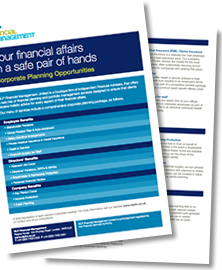
A recent report by the Office for Tax Simplification (OTS) proposing a series of changes in connection with the Inheritance Tax (IHT) system was on the whole welcomed and well received.
The report looked at making the administration around this deeply unpopular tax less complicated and published a series of proposals with the aim of simplifying IHT and in particular:
• Helping executors who administer a deceased person’s estate
• Helping us as individuals distribute our assets during our lifetime.
I took some time recently to review the report. Whilst some of these changes will be appreciated and positive, I feel that if these proposals are enacted by Government, this will inevitably result in a more complex system and potentially a higher IHT burden for many estates. It will also be interesting to see how the proposals will interact or interrupt any existing planning.
I detail below some of the OTS proposals and suggest you speak to your Financial Planner, so you can put the proposed changes into context and understand your personal position.
The main changes proposed are as follows:
• Currently, many gifts which are not exempt from IHT tend to be subject to a 7 year rule. In summary, the gift will not form part of your estate for IHT purposes after a period of 7 years. In addition, after the third anniversary and subsequent anniversaries thereafter, the IHT payable on the gift may reduce on a sliding scale. This will happen for larger gifts in excess of £325,000.
The OTS report suggests reducing this period from 7 to 5 years, but simultaneously also proposes to remove the taper relief benefit. Therefore, the tax on the gift will be charged in full for the entire 5 year period as opposed to potentially reducing after 3 years. This presents a “cliff edge” scenario whereby on death, after 4 years and 364 days, tax would be payable on the full amount, but if the donor lives one more day, the gift would become entirely tax-free.
On the whole, I believe that this is a positive change as it will ease administration and encourage gifting. However, it’s important to consider the health of the Donor before advising on such a gift.
• When making gifts, there are a number of allowances which can be utilised in order to make the gift immediately exempt from IHT. The new OTS proposals include removing many of these allowances and just giving everyone one higher allowance per year. From a simplification perspective, I personally welcome this change and believe it would ultimately encourage better utilisation of the IHT exemptions.
However, one current exemption enables individuals to annually gift a limited amount of money. This is referred to as ‘the normal expenditure out of income exemption’ but the OTS is recommending its removal. A number of our clients who have significant excess income utilise this exemption and this is an important part of their IHT planning, so these arrangements will require review if the proposals are enacted.
• The OTS also suggest changes to Capital Gains Tax (CGT) and how it interacts with IHT. Currently, if you inherit an asset, no CGT is payable until you dispose of the asset when CGT is then payable on the increase in value from the date of inheritance to disposal, ie the base cost is uplifted to the value on death.
The OTS proposes changing the base cost to when the original owner acquired it rather than the inherited value, which is likely to bring a significant increase in capital gains tax bills. In my view, it is very important to keep a close eye on this proposal and if the legislation is passed, suitable action should be taken.
• The Residence Nil Rate Band (RNRB) was introduced recently and many of our clients will be familiar with this new exemption as it is often discussed during our regular meetings in order to maximise its potential benefit. However, the RNRB conditions have been branded as unfair as an estate would only qualify for it, providing the main property is left to children, grandchildren and step children / step grandchildren. The OTS have acknowledged this and suggested it requires review in the future.
• At the moment, holdings in many AIM shares are free from IHT liabilities, due to them qualifying for Business Property Relief (BPR). The BPR rules were introduced to prevent family farms and businesses being split up to pay IHT bills but the report raises a question about whether it is within the policy intent of BPR to extend the relief to such shares, in particular where they are no longer held by the family or individuals originally owning the business.
• Currently, term life insurance policies which are not written into trust form part of one’s estate when one dies, meaning they can be liable for IHT. Policies written into trust do not form part of the estate. The report said it would be ‘desirable’ for there to be a standard rule that term life insurance policies fall outside of a deceased person’s estate for IHT purposes, whether or not the policies are written into a trust. We welcome this proposed change.
• From a pensions perspective, no major changes have been proposed. However, the OTS has indicated that in the future, it may be appropriate for the Government to consider a wider review of the tax system and pensions.
The above summary only touches the surface on these potential changes and so it is important to discuss your own particular circumstances in regard to estate planning with your financial planner. We offer IHT guidance and advice as part of our service and part of our initial review, so please do not hesitate to contact us if you wish to discuss this further.








